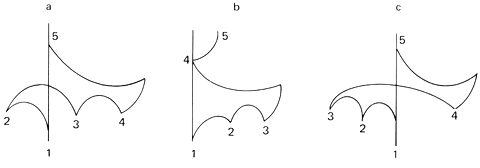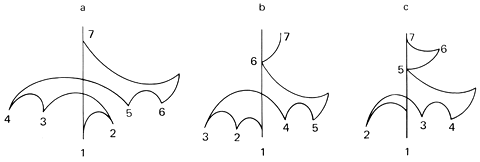| << Chapter < Page | Chapter >> Page > |
Music that is written in asymmetrical (irregular) meters is most often conducted in a modification of one of the previously described patterns. The patterns for irregular meters are not as standard as the other patterns because they are not used as often. These patterns usually adapt easily because most of the 5/4, 7/4, and other similar irregular meters are combinations: 3 + 2 (5/4), 2 + 3 (5/4), or 4 + 3 (7/4), 3 + 4 (7/4), etc. There are other combinations but the above are found more frequently. There are also instances in which irregular meters are truly pure 5/4, 7/4, or other irregular groupings. These instances are in the minority, however.
Several possible ways to conduct five-beat measures are given in figure 1. The pattern to use is the one that is most appropriate to the music and most comfortable for the conductor. (Also see the discussion of fast tempos.)

A seven-beat measure has the same type of implications as the five-beat bar. The patterns in figure 2 are usable in most situations. One may encounter other more unusual orderings of the rhythmic relationships within the measure that will demand a different pattern. The conductor must deal with these instances individually and modify the patterns as needed.

Pattern a is a modified and divided four pattern with the last gesture eliminated. It is quite effective for measures that are not combinations of 3 + 4 or 4 + 3. It is effective, for instance, for 2 + 2 + 2 + 1. Patterns b and c work well for the combination measures. (See also the discussion on fast tempos.)

Notification Switch
Would you like to follow the 'Choral techniques' conversation and receive update notifications?